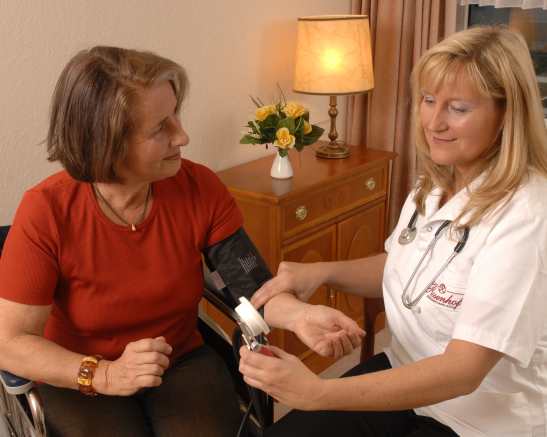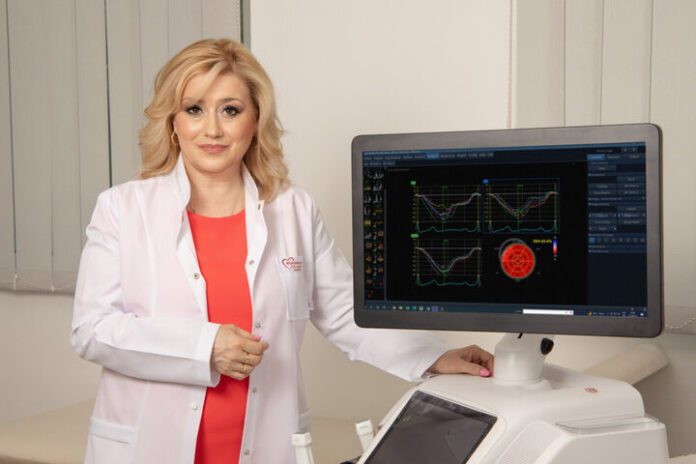Hypertension (high blood pressure) definitely increases the risk of cardiovascular complications such as stroke, heart attack, etc. When the blood pressure values are too high, it can lead to disruption of the brain. This is stated by Prof. Krasimira Hristova, MD. She is the medical director of a center for cardiovascular diseases in Sofia, and also a specialist in cardiology with over 25 years of experience. In this sense, there are some important considerations related to the treatment and monitoring of high blood pressure, which will be discussed in this article.
Some of the complications of high blood pressure may be temporary, such as transient ischemic attacks. However, others lead to ischemic or hemorrhagic stroke. This is already a serious condition that can leave lasting health effects.
Blood with limits of 160-170 upper and 100-110 lower is dangerous

People who have been diagnosed with hypertension for years are most at risk. Often they maintain high values and permanently. They are considered such when the upper (systolic) limit is around 160-170, and the lower diastolic – over 100-110. The typical hypertensive has other problems as well. He is usually overweight, eats salty and fatty foods, consumes alcohol regularly. In addition, he suffers from immobility. Many people smoke to subjectively relieve internal tension and stress, but they make their condition even worse.
There is also the so-called nocturnal hypertension, when blood pressure rises in the wee hours. This is difficult to detect in the doctor's office, while being a leading cause of poor hypertension control. Every cardiologist has patients who got complications just at night.
What are false positive blood values

The main goal of any treatment for hypertension is to control the high values and bring them into acceptable limits. They must be monitored with a holter for at least 24 hours.
"The reason is that some of the values during the examination in the office can be false positive, and then the patient has normal blood pressure. Also, in the office, the values can be relatively normal, and later they become high, we do not notice them and neglect the treatment.
Therefore, we recommend, even when we have an established therapy, to place a holter to give us a real picture. It is wrong to do the monitoring in hospital conditions, it should be in a normal environment, when a person is at home and at work", commented Prof. Hristova.
What is the treatment for patients with hypertension and a history of stroke?

The target blood values in such high-risk patients is 120-130 for the upper limit and 80-85 for the lower limit. Care must be taken that they do not become too low. There is a risk of disrupting the internal autoregulation of the brain. If the blood falls below 100 per 60, especially in older people, this is an additional burden on the body.
If the values are above 160 per 100, patients must be treated. The risk of a repeat stroke is much higher than in patients who have never had one before. That is why it is important that people measure their blood in the morning and in the evening, but that this should be done about an hour, an hour and a half after they have taken their medication. We do not advise to first measure the blood and take medication according to the values.
High blood pressure is dangerous even if there are no symptoms
Blood pressure values that occur without noticeable symptoms or have minor complaints are also dangerous. Treatment is needed to prevent complications. We should not neglect patients with rhythm disorders either, because hypertension can be one of the causes of atrial fibrillation.
When to consider changing hypertension medications
When an arterial hypertension does not respond to the treatment, we talk about exhausting the effect of these medications. This happens with ACE-inhibitors after the fifth or sixth year of their use. The drug can be changed when we have reached the maximum dosage and we cannot get good blood pressure control. My advice is, after we have gone through combination therapy, the maximum doses have been given, then only proceed to change the therapy.
Modern medications that are used to treat arterial hypertension are long-acting. With them, the effect occurs more slowly. We usually look for it after the second week to the first month. So let's not rush, but simply reassure the patient that there is no way to reach values of 120 to 80 after a change of therapy after only 2-3 days. Some people normalize faster, others need a little patience.
Editor Ina Dimitrova


